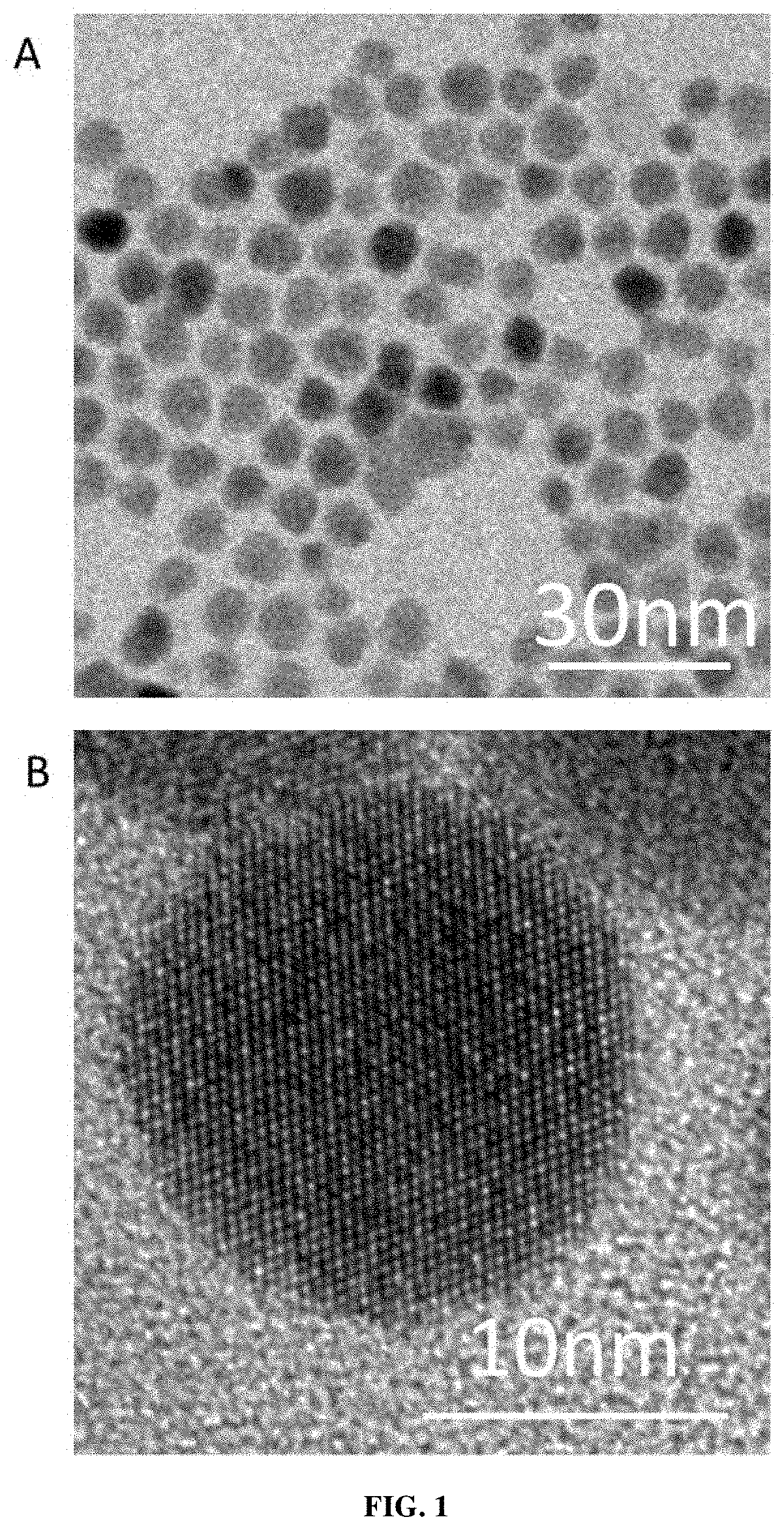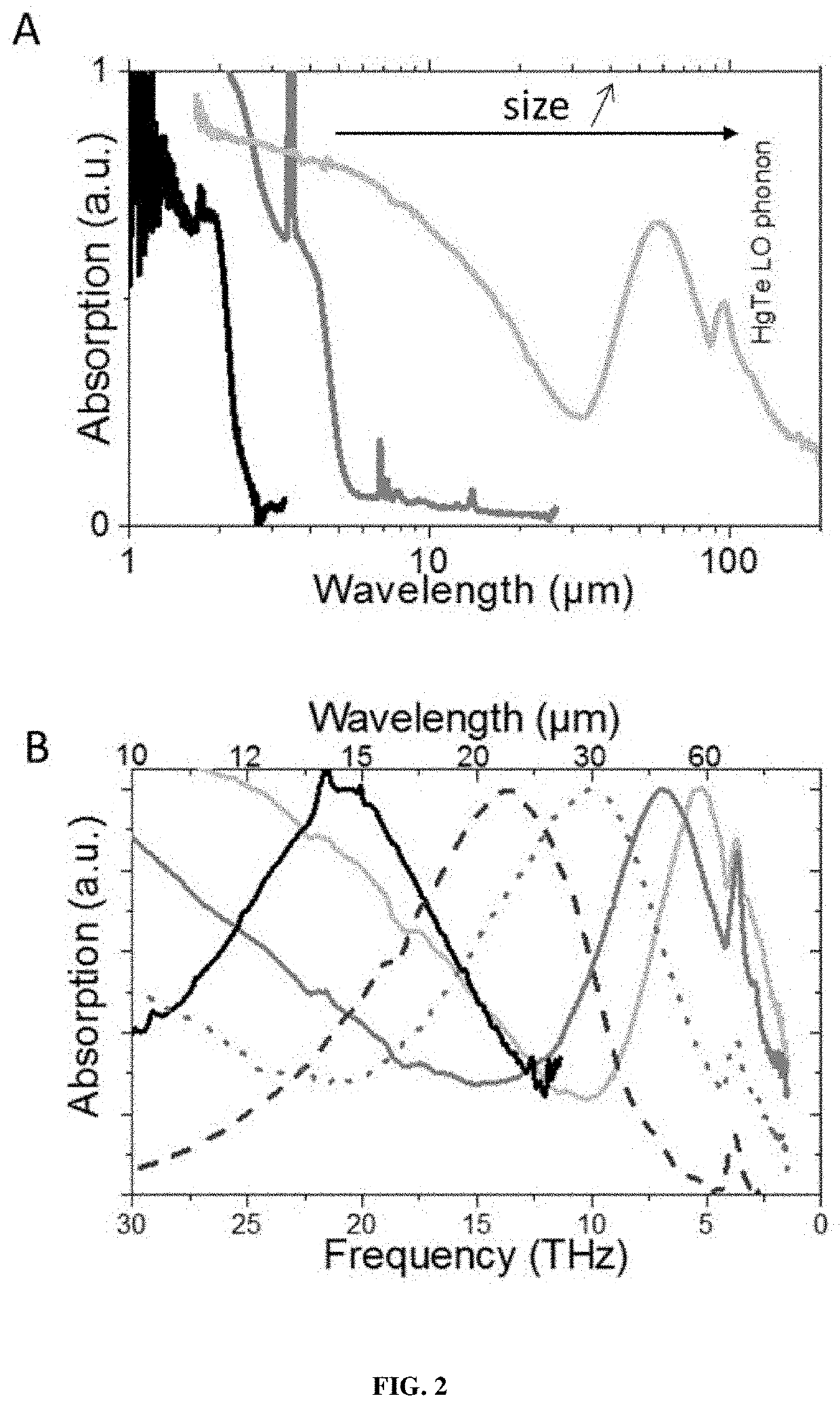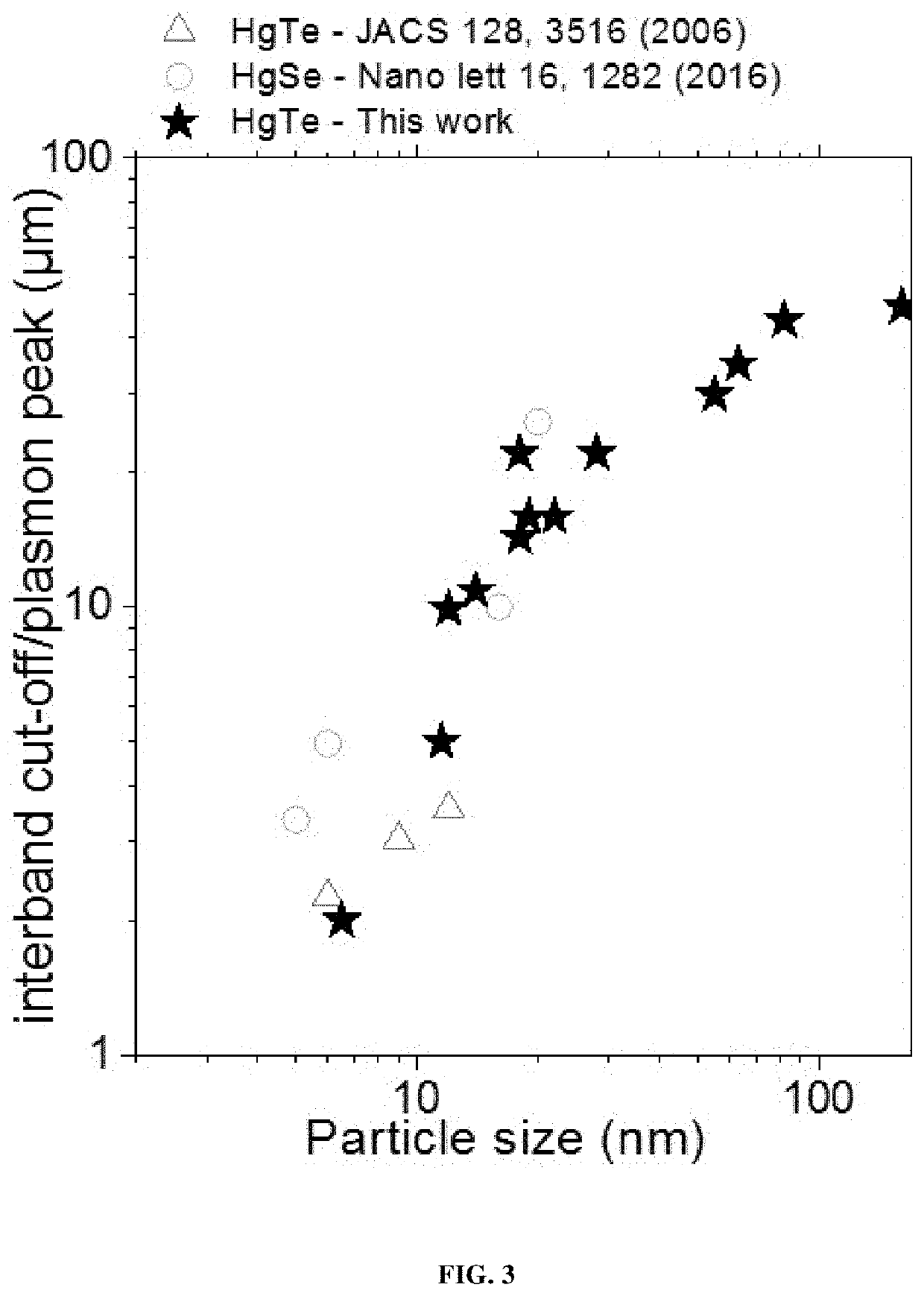FAR-INFRARED, THz NANOCRYSTALS, HETEROSTRUCTURED MATERIAL WITH INTRABAND ABSORPTION FEATURE AND USES THEREOF
- Summary
- Abstract
- Description
- Claims
- Application Information
AI Technical Summary
Benefits of technology
Problems solved by technology
Method used
Image
Examples
example 1
crystals Synthesis
[1587]Oleylamine was placed under vacuum and heated to 120° C. for 1 h. Then, the solution is placed to Argon atmosphere and heated up to the reaction temperature. A second solution is made by mixing 0.1 mmol of HgBr2 and 0.1 mL of TOP:Te (1 M) in 0.9 mL of oleylamine The mercury and tellurium solution is quickly injected (within 5 min after mixing) in the hot oleylamine. The solution color quickly turns to dark brown and the reaction is made during 3 min A solution made of 1 mL of dodecanethiol, 9 mL of toluene and few drops of TOP is quickly added to quench the reaction. 90 mL of ethanol is added to precipitate the nanocrystals from the solution. The colorless supernatant is discarded and the precipitated redispersed with 3 mL of chloroform and few drops of dodecanethiol.
[1588]The nanocrystals are washed again with 90 mL of methanol and redispersed in 3 mL of chloroform.
example 2
of HgTe with n-type Behavior
[1589]513 mg of HgCl2 was added to 57 mL of oleylamine in a 100 mL round flask. The solution was placed under vacuum and heated to 110° C. for 1 h. Then, the temperature is increased to 120° C. and solution placed to Ar atmosphere. 1.9 mL of TOP:Te (1M) with 10 mL of oleylamine have been warm up before added to the mercury solution. The solution color immediately turns to dark brown and the reaction is made during 3 min. A solution made of 1 mL of dodecanethiol and 9 mL of toluene is quickly added to quench the reaction. 80 mL of ethanol is added to precipitate the nanocrystals from the solution. The colorless supernatant is discarded and the precipitated redispersed with 8 mL of chloroform and few drops of dodecanethiol. The nanocrystals are washed again with 60 mL of methanol and redispersed in 6 mL of chloroform.
[1590]FIGS. 23A and 23B show the infrared and spectrum transfer curve corresponding to said n-type HgTe nanocrystals.
example 3
of HgTe with p-type Behavior
[1591]684 mg of HgBr2 was added to 57 mL of oleylamine in a 100 mL round flask. The solution was placed under vacuum and heated to 110° C. for 1 h. Then, the temperature is decreased to 60° C. and solution placed to Ar atmosphere. 1.9 mL of TOP:Te (1M) with 10 mL of oleylamine have been warm up before added to the mercury solution. The solution color immediately turns to dark brown and the reaction is made during 3 min. A solution made of 1 mL of dodecanethiol and 9 mL of toluene is quickly added to quench the reaction. 80 mL of ethanol is added to precipitate the nanocrystals from the solution. The colorless supernatant is discarded and the precipitated redispersed with 8 mL of chloroform and few drops of dodecanethiol. The nanocrystals are washed again with 60 mL of methanol and redispersed in 6 mL of chloroform. The final solution is filtered with 0.2 μm PTFE filter.
[1592]FIGS. 24A and 24B show the infrared and spectrum transfer curve corresponding to ...
PUM
 Login to view more
Login to view more Abstract
Description
Claims
Application Information
 Login to view more
Login to view more - R&D Engineer
- R&D Manager
- IP Professional
- Industry Leading Data Capabilities
- Powerful AI technology
- Patent DNA Extraction
Browse by: Latest US Patents, China's latest patents, Technical Efficacy Thesaurus, Application Domain, Technology Topic.
© 2024 PatSnap. All rights reserved.Legal|Privacy policy|Modern Slavery Act Transparency Statement|Sitemap



